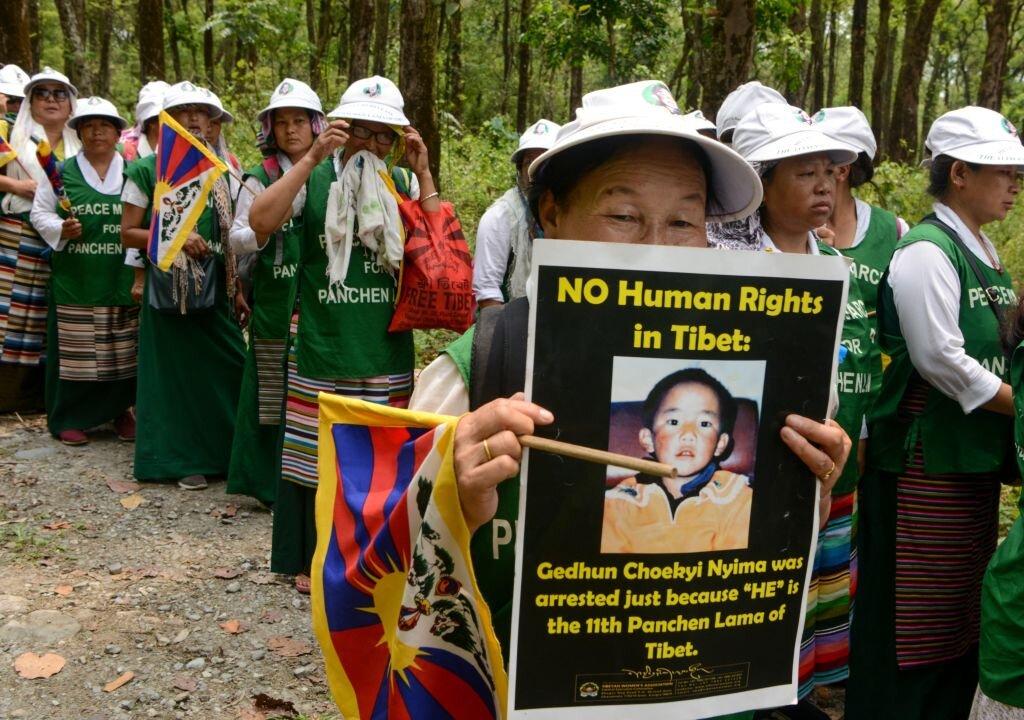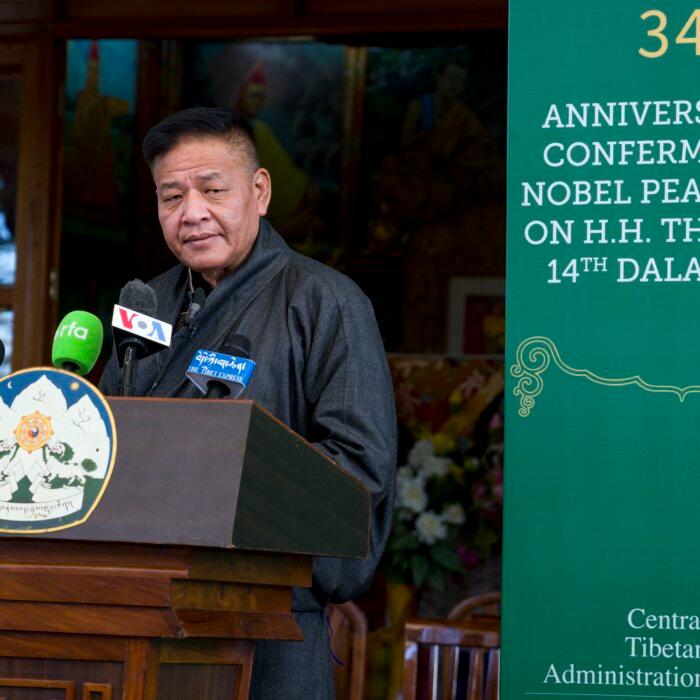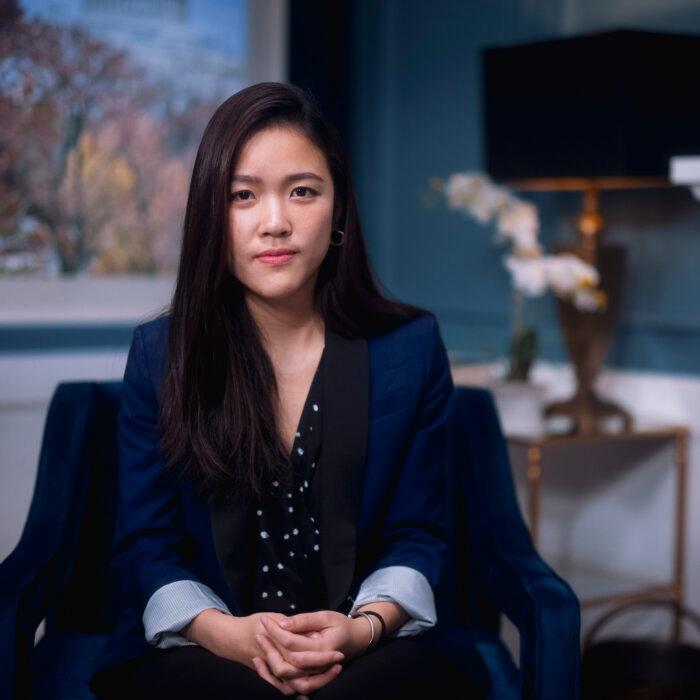On Dec. 6, Gyaincain Norbu concluded a six-month tour of western Tibet, visiting monasteries and ordaining 28 Tibetan monks. The Beijing-backed spiritual leader was handpicked by the Chinese Communist Party (CCP) in 1995 as the reincarnation of the Panchen Lama, Tibetan Buddhism’s second-highest spiritual figure.
The ordinations took place between Oct. 6 and Nov. 7 at Tibet’s 700-year-old Tashi Lhunpo monastery, the traditional seat of the Panchen Lama. Chinese state news agency Xinhua reported on Dec. 7 that the tour and the ordinations—a first for the state-stamped spiritual leader—signified improvement in the CCP-approved leader’s “Buddhist attainments and religious status.”
For centuries, the monastery, located in mountainous Xigazê, or what’s known to Tibetans as Shigatse, was the seat of successive Panchen Lamas. Traditionally, the title was given to any of the line of reincarnated lamas, second only to the Dalai Lama in spiritual authority. The reincarnated Panchen Lama is traditionally identified by means including dreams, omens, and a formal recognition by the Dalai Lama.
On May 14, 1995, the 14th Dalai Lama—who fled CCP persecution in 1959 and currently lives in exile in India—appointed 6-year-old Gedhun Choekyi Nyiama as the 11th reincarnation of the Panchen Lama. Immediately after, however, the boy and his family were kidnapped by the CCP, which went on to appoint its own candidate, Gyaincain Norbu, six months after Gedhun Choekyi Nyiama’s disappearance.
Today the 33-year-old Gyaincain Norbu holds many positions in CCP-constituted bodies and often appears at important party events. He is the president of the Xizang (Tibet Autonomous Region) branch of the Buddhist Association of China, and a member of CCP’s top advisory body, the Standing Committee of the National Committee of the Chinese People’s Political Consultative Conference. He is also the vice president of the Buddhist Association of China.
Meanwhile, the whereabouts of the leader acknowledged by the Dalai Lama are unknown. In 2020, 25 years after his disappearance, the CCP issued a brief statement saying that Gedhun Choekyi Nyiama is a college graduate with a stable job and he and his family don’t want their “current normal lives” to be disturbed.
Meanwhile, the exiled Tibetan media, as well as Chinese state media, reported on the CCP-approved Panchen Lama’s tour of Tibet, quoting him as saying that Tibetan Buddhism should “adapt to socialist society and the new era of socialism with Chinese characteristics.” He has also insisted that the Tibetan Buddhist Community should thoroughly ”study and implement the spirit” of the CCP’s 20th National Congress.
His message in Tibet centered on establishing “the status of Comrade Xi Jinping as the core of the Party’s Central Committee and of the whole Party.” It promoted “the guiding role of Xi Jinping’s thought on socialism with Chinese characteristics for the new era.”
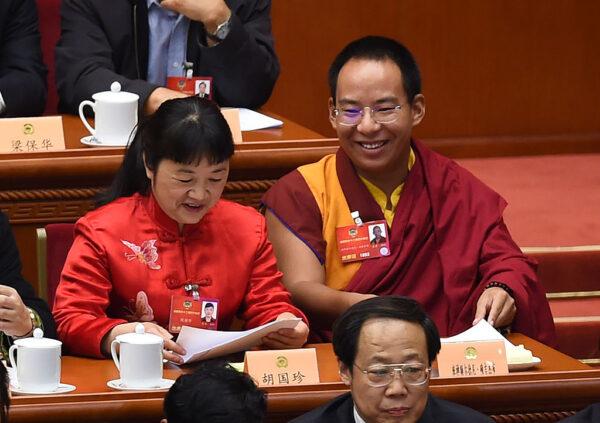
What’s at Stake?
When the Dalai Lama fled Tibet for India, many Tibetan monasteries were re-established in India. Thus, there is also a Tashi Lhunpo monastery in the southern Indian state of Karnataka. The Epoch Times spoke with Venerable Kekhang Rinpoche, general secretary of the Tashi Lhunpo monastery in Karnataka, about the significance of the Panchen Lama tradition.Behind the Panchen Lama, there is a global heritage dating back 1500 years. It can be traced to the ancient Nalanda Mahavihara, a Buddhist monastic university in what’s today’s central India. One of the schools of learning that evolved at Nalanda also formed the foundations of the Panchen Lama tradition.
Learning at Nalanda focused on classical Indian philosophical schools, which emphasized logic and reasoning and developed a tradition primarily in Sanskrit, the monk told The Epoch Times.
The Nalanda (5th-12th century A.D.) was well connected through some of the most ancient land and sea civilizational routes and received students from all over the world.
Kekhang Rinpoche told The Epoch Times that the Nalanda produced many master scholars, including the philosopher monk Nagarjuna, widely considered to be one of Buddhism’s most important philosophers. Others include Acharya Aryadeva, Buddhapalita, Bhavaviveka, Chandrakirti, Shantideva, Shantarakshita, and Kamalashila.
These scholars, known as the “maha pandita,” helped to develop philosophical traditions that became the foundation of Mahayana Buddhism in many east asian nations. The Tibetan term “panchen” is itself derived from the Sanskrit word, “pandita,” meaning scholar, and “chenpo” in Tibetan, which means great; Panchen Lama thus means “great scholar” or maha pandita.
The Nalanda Mahavihara was destroyed in the 1190s by Turko-Afghan invaders. However, by then its influence, including Sanskrit texts from its many schools, had reached far and wide. Hundreds of the texts were carried to China by the Chinese Buddhist monk Xuanzang, who spent two years at Nalanda, and the Tang-era monk, Yijing, who spent ten years there.
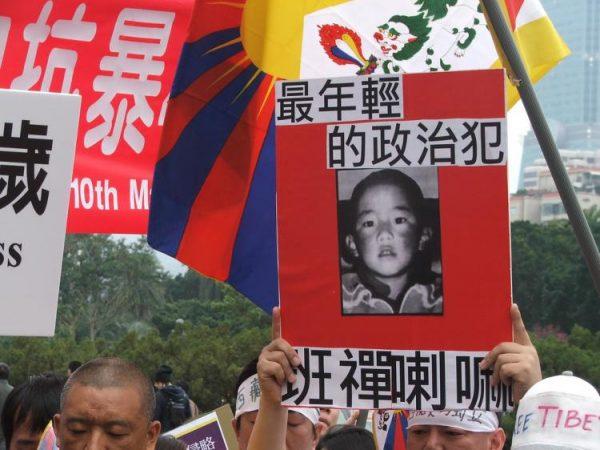
The 70,000 Character Petition
Although the 14th Dalai Lama fled the CCP, the 10th Panchen Lama continued to live in Tibet. He was given a few “fancy titles” by the CCP, including that of Vice-Chairman of the National People’s Congress. After Tibet’s annexation, the CCP began jailing large numbers of Tibetans. Panchen Lama’s protests were brushed aside by the CCP’s regime as “inevitable in all reform movements,” according to the Department of Information and International Relations of the Tibetan Government in Exile.In 1962, the 10th Panchen Lama made inspection tours around Tibet, Xinjiang [termed East Turkestan by human rights watchers] and southern China. Disturbed by what he saw, he wrote a lengthy petition to the Chinese communist regime.
“Those who have religious knowledge will slowly die out, and religious affairs are stagnating, knowledge is not being passed on, there is worry about there being no new people to train, and so we see the elimination of Buddhism, which was flourishing in Tibet and which transmitted teachings and enlightenment,” the Panchen Lama said. “This is something which I and more than 90 percent of Tibetans cannot endure.”
His petition, which became known as “the 70,000 Character Petition,” was submitted in May 1962 to Premier Zhou Enlai, who instructed the United Front Department and senior communist cadres to review their work in Tibet.
However, Chinese leader Mao Zedong dubbed the petition “a poisoned arrow” aimed at the party. He called the Panchen Lama a “reactionary feudal overlord.” Enraged by the spiritual leader’s criticism of the party, he put him under house arrest and then on trial. His CCP-bestowed titles were removed and he was subjected to a “thamzing” or “struggle session” involving public humiliation and torture.
Mao’s cultural revolution swept Tibet from the beginning of 1966. The decade that followed saw the plight of the 10th Panchen Lama worsening, including an invasion by the Chinese Red Guards who paraded him, abused and tortured him in public in August 1966. Until 1977, he was in detention and the world had little or no information about him. Then he suddenly reemerged in early 1978 and a year later was reinstated as the Vice-Chairman of the National People’s Congress.
However, he refused to be silent. He suddenly passed away at the age of 51 on Jan. 28, 1989, shortly after giving a speech criticizing the excesses of the Cultural Revolution. It is widely believed that he was poisoned.
The 10th Panchen Lama’s 70,000 character petition remained a mystery until 1996, when it was anonymously delivered to the offices of the London-based Tibet Information Network.
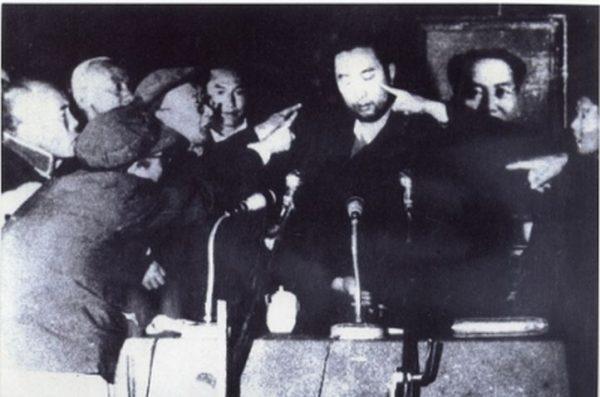
Panchen Lama Advocacy
The issue of the abducted Panchen Lama has made headlines again in the past few months, coinciding with Gyaincain Norbu’s six-month-long tour. The issue gains significance because the Panchen Lama traditionally plays a key role in identifying the next reincarnation of the Dalai Lama.On Dec. 15, the CCP launched an exhibition of Buddhist art and cultural relics belonging to the Panchen Lama lineage in the Macao Special Administrative Region. The exhibition showcases 137 rare items from the Tashi Lhunpo monastery and the Palace Museum in Beijing and will run until March 17, 2024, according to Xinhua.
Meanwhile, according to a report by Radio Free Asia, the Chinese regime paid 100 yuan ($14) to Tibetans for each blessing-seeking visit they make to Gyaincain Norbu while he traveled the region.
The campaign to boost the popularity of the Beijing-appointed Panchen Lama is happening amidst debate on the next reincarnation of the 88-year-old 14th Dalai Lama, who has said that he may be reborn outside mainland China, or possibly not reborn at all.
In a white paper last month, the CCP asserted that any successor to the Dalai Lama should be from the mainland and should be approved by the party. The regime has already attempted to regulate reincarnation with its 2007 “State-Issued Measures on the Management of the Reincarnation of Living Buddhas of Tibetan Buddhism.”
In the recent white paper, the regime said that “reincarnated Tibetan living Buddhas, including Dalai Lamas and Panchen Rinpoches, must be looked for within the country, decided through the practice of lot-drawing from the golden urn, and receive approval from the central government.”
Kekhang Rinpoche decried this move by the CCP as “distorting the lineages and the process of recognizing the masters.” The imposition of government regulation on the spiritual process is an act that harms ancient traditions and identities, evolved and enriched through millennia of civilizational interface, he said.
“The Dalai Lama and Panchen Lama are closely connected, and each participates in the process of recognizing the other’s reincarnations,” he said.
“Eradication of the spiritual foundation of any culture is the easiest way to manipulate its masses, and the CCP’s interference in ideals and lineage rituals older than the CCP’s history is a blatant violation of freedom of human rights and cultural heritage for its shallow political agenda.”
To further promote the cause of the Panchen Lama tradition, India’s Tashi Lhunpo monastery launched the “Panchen Lama Awareness Initiative” on Dec. 5. The campaign’s launch appealed to Indian lawmakers to exert pressure on China to release the 11th Panchen Lama.
“I make this heartfelt appeal in the context of the dire situation in Tibet,” said Tenzin Thupten Rabgyal, the abbot of Tashi Lhunpo Monastery, in a statement.
